Toyota has never been shy of producing innovative cars, but few have turned heads – or headlines – like the Toyota iQ. This groundbreaking compact city car, less than three metres long, was launched in 2008 to a background of accelerating environmental awareness and the growing problems of urban pollution and congestion. It was these issues, which today form the bedrock of any discussion about the future of motoring, that absolutely shaped the mould-breaking iQ.
Toyota iQ: development
The Toyota iQ was created from the ground up and the car’s gestation period was lengthy – almost five years from the initial proposition in 2003 through to the start of production. The design team, led by Chief Engineer Hiroiki Nakajima, was tasked with rethinking the small car to create an ultra-compact and environmentally friendly four-seater that was at home in crowded cities and yet which offered stylish looks, appealing quality and a refined drive. It was a lot to fit into a sub-A-segment model less than three metres long overall.
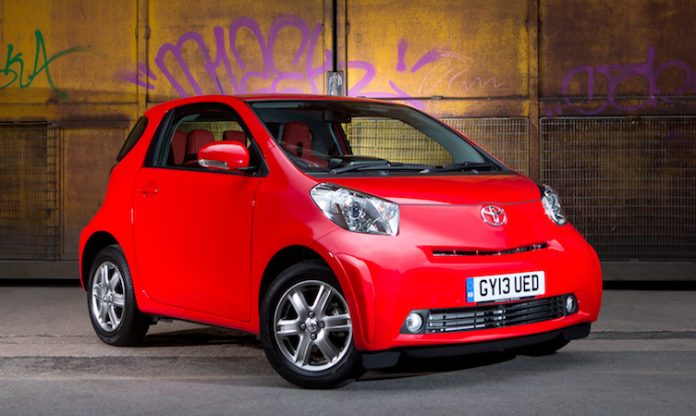
An early development programme focused on taking a revolutionary approach to packaging and miniaturisation. The Japanese design philosophy of ‘kaizen’ – meaning continuous incremental improvement – simply didn’t apply here. Instead, ‘kakushin’ – for revolutionary change or radical innovation – became the driving force behind the project. Every detail, every subset of components had to be rethought, not just in their design but also in how they related to each other and how they could be packaged within the iQ’s footprint.
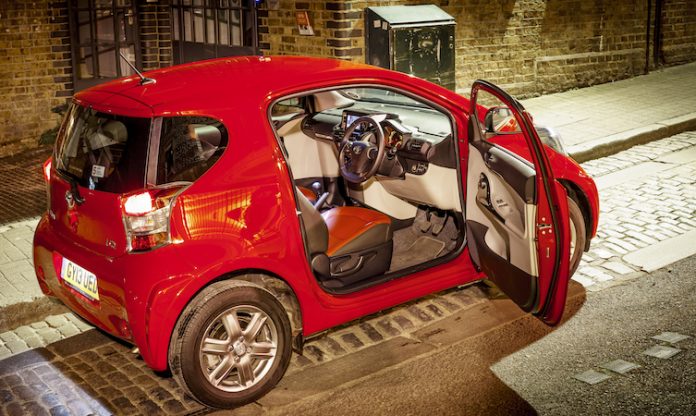
At the same time, designers both in Japan and at Toyota’s ED2 Design Centre in France concentrated on shaping what would become the iQ’s striking exterior styling. Then, after that initial two-year development period, Toyota’s senior management gave the project the go-ahead for production and the iQ concept was revealed at the 2007 Frankfurt Motor Show.
Throughout its inception, development and production, the iQ’s environmental message was clear: that the reduction of fuel consumption, CO2 emissions and pollution was crucial if cars were to continue having a place in the modern world. The Toyota iQ was a bold statement of intent. But Toyota’s commitment to reducing the environmental impact of the iQ ranged wider still, and the car’s production facility at the Takaoka Plant in Japan was repurposed to accommodate an innovative new assembly line that maximised energy efficiency.
Toyota iQ: launch
The iQ was launched at the 2008 Geneva motor show. Here was a sophisticated four-seat city car unlike anything else that was available. With a wheelbase of just 2000mm and an overall length of 2985mm, the iQ was a full 420mm shorter than its Aygo stablemate, and yet it was 65mm wider.
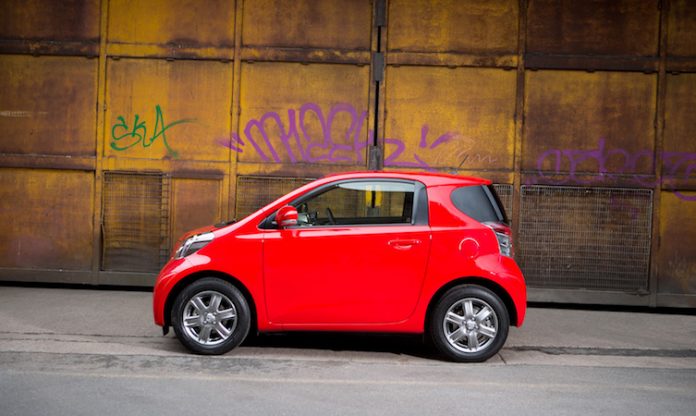
Dimensionally, the car’s nearest rivals were the two-seat Smart ForTwo (just 2695mm long but a strict two-seater) and the Smart ForFour (four seats, but considerably longer at 3752mm), but neither had the design sophistication, build quality nor equipment levels of the Toyota. In the UK the Toyota iQ was offered with a choice of two petrol engines, either a 68hp 1.0-litre VVT-i or a 98hp 1.33-litre VVT-i. The former laid down another industry benchmark: with CO2 emissions of just 99g/km, it was the first time a petrol-engined four-seater had broken the 100g/km mark.
The iQ’s distinctive styling gave it an energy and an instant identity all of its own. It was less than three metres long, but with a width of 1680mm and height of 1500mm, the iQ clearly followed the Japanese aesthetic design approach of ‘Perfect Imbalance’ (today, perhaps, we might call it ‘disruptive’). Its proportions forward of the B-pillar aped those of cars from a segment or two above, and yet from the trailing edge of the doors to the tail-lights, the car appeared abruptly truncated – and yet the design was at once harmonious and satisfying.
What is it like behind the wheel?
To sit in and to drive, the Toyota iQ offered an almost bewildering contrast of contradictions. For the driver and front passenger, the cabin presented a near-optical illusion of space within an impossibly small silhouette. Thanks to the generous overall width and aided by ultra-slim seats and an innovative thin door design, front-seat shoulder room was plentiful and apparently at odds with the iQ’s exterior dimensions. Compared with the ostensibly larger Aygo, the iQ’s cabin was a full 140mm wider inside.

Ahead and to the side, the cabin offered a view akin to that of a fully proportioned car in the A- or even B-segment. But a glance over the shoulder turned that impression of space on its head, with an improbably compact rear cabin and a rear window quite literally within touching distance.
Once on the move the contradictions continued. Thanks to that compressed wheelbase, wheel-at-each-corner stance and a turning circle of just 3.9 metres, the Toyota iQ was as agile and nimble in tight city streets as its stature suggested. But at higher speeds and on the motorway the it remained refined and stable despite the dimensions.
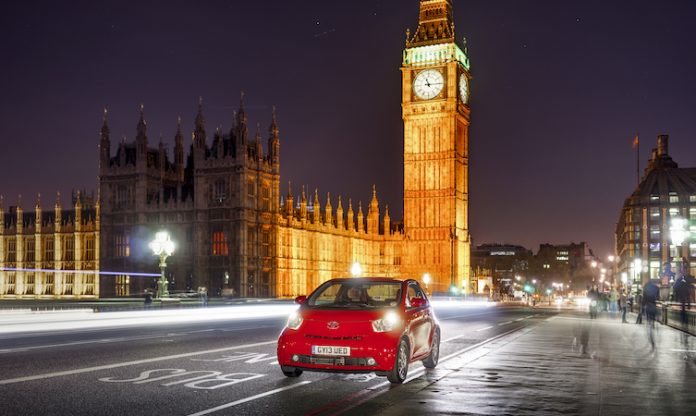
Somehow, too, the cabin was kept well insulated from the unsettling bump intrusion typical of so many short-wheelbase cars: ordinarily, when a compact car’s front wheels hit a large bump or pothole, the front suspension is still working to recover from the impact when the rears strike the same obstacle, which leads to passenger discomfort. But the iQ’s cleverly optimised front MacPherson strut and rear torsion beam suspension minimised such intrusions, and the cabin remained impressively undisturbed.
Small car engineering
Every element of the Toyota iQ was engineered and packaged to save weight and space. The asymmetric design of the dashboard, with an ultra-compact air conditioning unit and a detachable glovebox, created enough space for the front passenger seat to be moved forward to free up rear passenger space. Under the bonnet, the differential was mounted ahead of the engine and the steering gear adopted a centre take-off design, both of which freed up cabin space while allowing shorter front overhangs. And an ultra-slim 32-litre fuel tank, which used a special fuel pump that addressed the issues of gradient-induced fuel starvation and level accuracy usually associated with thin, flat fuel tanks, was mounted under the front seats.
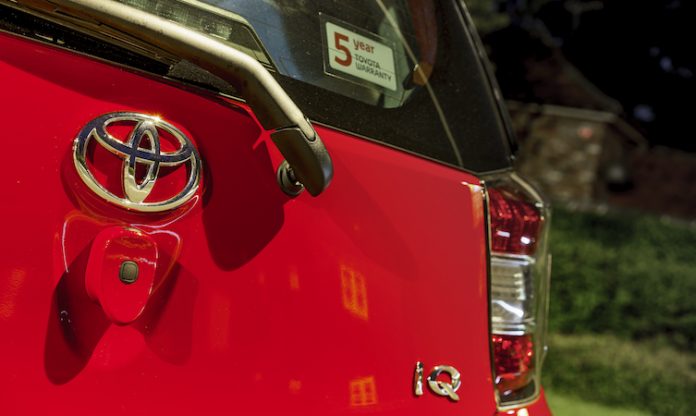
And yet the Toyota iQ was about more than nuts-and-bolts innovation. That interior was almost jewel-like in its execution was key to a deliberate strategy of altering consumers’ opinion of small cars and attracting new customers to the Toyota brand. Richly coloured trim materials adorned a cabin laden with stylistic flourishes that created an environment of urban sophistication. The ‘techno-organic’ design of the V-shaped centre console and the door armrests are actually mathematical emulations of the graceful, ocean-going manta ray, while the seamless integration of the audio unit and control functions enhanced the iQ’s premium feel.
At its launch the Toyota iQ was universally praised for its incredible packaging, deceptive big-car feel, dynamic handling and motorway stability. The car’s unique appearance and stylish design inspired a range of customisation option packs featuring eye-catching exterior decals and interior design flourishes, and there was even a high-performance version. The GRMN-tuned iQ Supercharger prototype, revealed at the 2011 Tokyo Auto Salon, was powered by a supercharged 1.33-litre VVT-i engine producing 128bhp and had a six-speed close-ratio gearbox, sports suspension, a full bodykit and 16-inch alloy wheels.
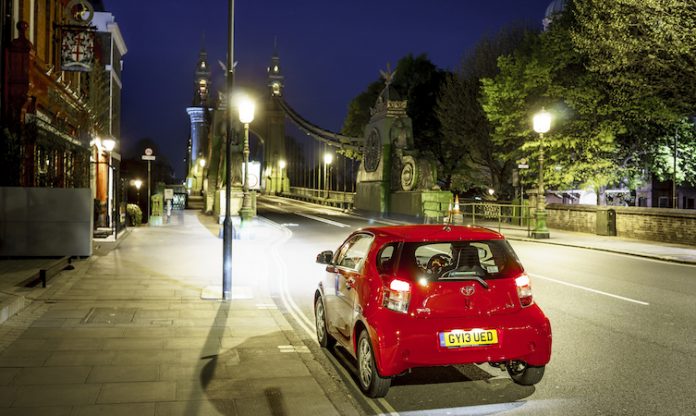
True to the iQ’s environmentally friendly agenda, there was even a battery-powered version, at least in pre-production form. The iQ EV Prototype appeared at the 2011 Geneva motor show. It was powered by an 11kWh battery pack (cleverly hidden beneath the front seat in place of the fuel tank), it could reach a top speed of 78mph and would travel up to 65 miles on a charge.
UK sales of the Toyota iQ stopped in 2014. Unfavourable exchange rates between Europe and Japan hampered sales, and alterations needed to meet upcoming EU emissions regulations would have further increased the model’s price. The model went out of production for other markets in 2015.
Despite this, the iQ remains a benchmark for engineering innovation, and the environmental message that drove its development has never been more relevant than it is today.
By Tim Dickson
See Toyota’s current model range by clicking here.
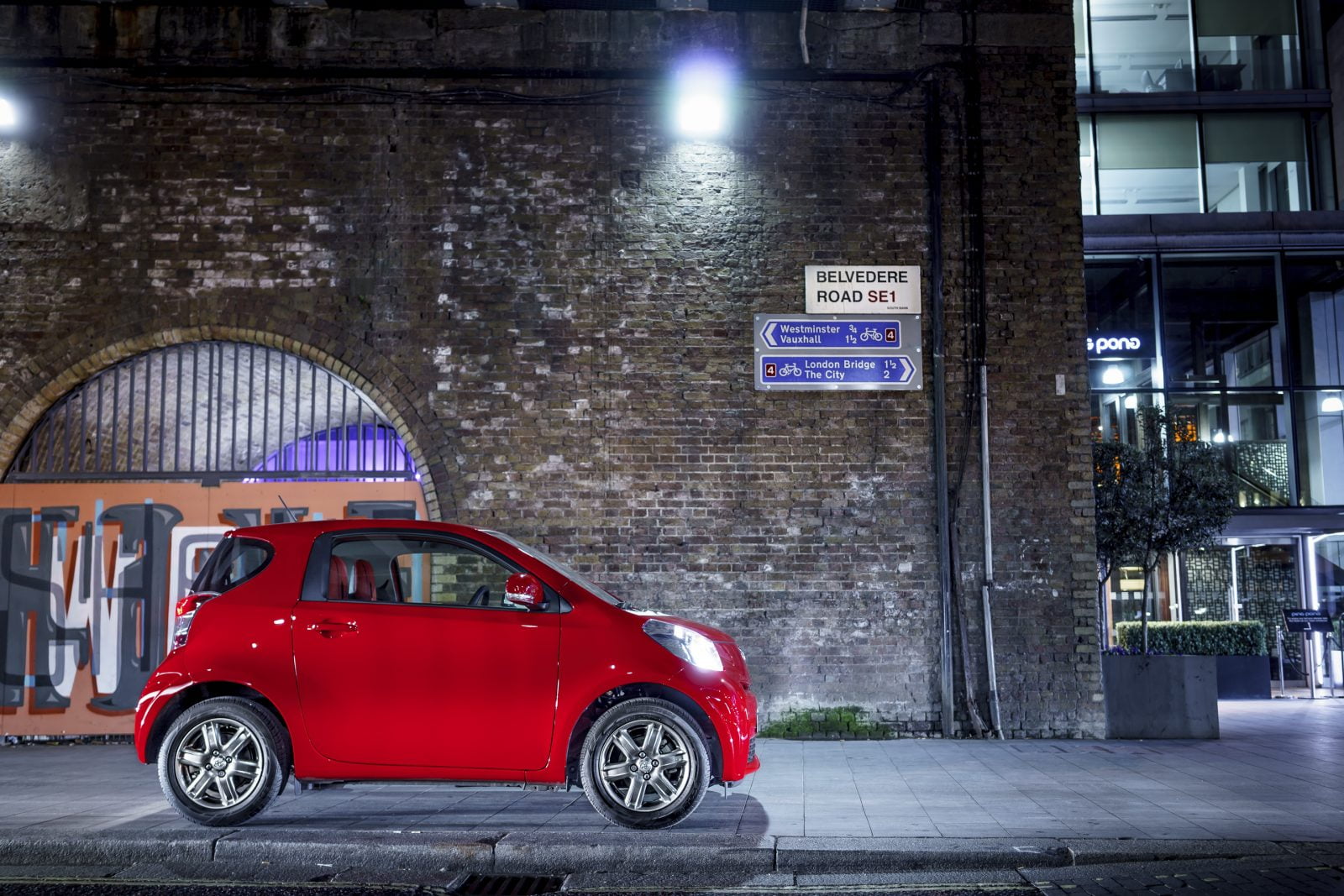


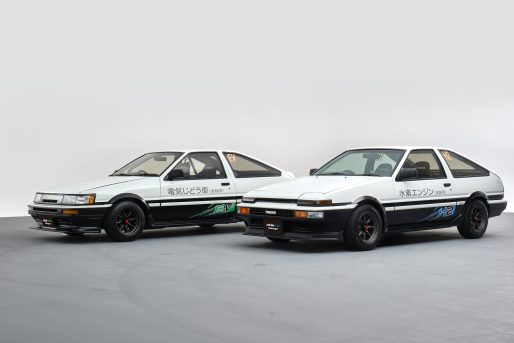
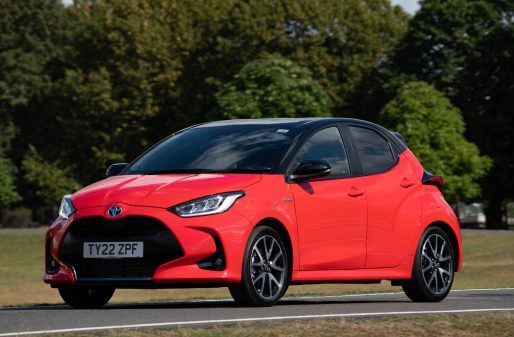
I love my 09 IQ which I have had for coming up 4 years bought as a second car runaround. It has 59000 miles on the clock. I had the ‘peeling paint’ issue and as I had purchased it from a main dealer Toyota resprayed it a couple of years ago for free which was amazing. It looks like new and as I live in London an added bonus is that it is ULEZ compliant. I have to keep this going as long as I can. Nothing out there is tempting me to replace it.
Hi Caroline,
Thank you very much for your kind words.
We wish you many more happy miles in your iQ.
Thanks.
Hello, noticed this thread highlighting support in respraying peeling paint on Toyota Iq. We purchase our Toyota Iq new (09 plate) and have had the same issue of peeking paint (it’s in the pearlescent white) on the front bonnet. We love the car and would love for it to be looking as good as it can so would be so grateful if this could be resolved. Are you able to help please?
Hi, thanks for your question.
We are glad to hear you love your IQ!
We would recommend contacting your Toyota Centre regarding this.
Thanks.
Hi,
I’ve had my second iq2 for over five years now, bought used at 11995 miles from a Toyota dealer, one woman owner previously. it’s a 12 plate fire orange, now on 57k miles.
It’s been through three incidents, two bus impacts ( left side front , right side front – not my fault ) and a deer strike at 60 mph. All cosmetic damage, ( three front bumpers, one new headlight,wee bit of metal work by the light )no structural faults – this car is a tough cookie, I trust it with my life.
The upkeep is minimal, it’s sailed through each and every mot, no advisories, no fails. It is the most relatable car, never lets me down.
It’s an absolute pleasure to drive.
What makes me apprehensive and mars my full enjoyment ,is that this car is irreplaceable, so if something unforeseen or it’s end of life happens, it’s highly likely I won’t be able to source another,
After all we’ve been through, I can’t imagine life without my Iq now. Other cars do not compare. To go through three moderate accidents ( the deer was the biggest, the tow truck man said he’s seen worse on far bigger cars, it appears the snub nose of the Iq pushed the deer out of the way, not up and over the bonnet ) and still have a sound safe car speaks volumes of how the Iq was built.
#bringbacktheiq !!
I couldn’t agree more. Nothing to compare. My 2010 Toyota iQ is the first ‘from brand new’ car I have ever had … It is my only car …. it ‘turns on a sixpence’ as the expression used to be, is brilliantly economic, requires no car tax because of its ultra low emissions, and has spacious, comfortable seats with high head clearance. I had heard that that Aston Martin were taking over the bodies and were going to put Aston Martin engines into them …. but I have had a potter about in the Aston Martin website and can see no sign of that …… I wonder whether this is something ‘in the pipeline’ so to speak … with plans for a renewable fuel adaptation? (I notice Aston Martin’s F1 team cars are looking at alternative fuels ….. synthetic fuels and who knows .. maybe hydrogen fuels ….. to get around the problem of the dangers of lithium batteries of electric cars replacing the emissions problems of petrol powered combustion engines …. If you’ve heard anything about this yourself I’d be so interested to know more ….. (could just be a rumour of course)
This is an excellent car. Mine is a 2012 1.3 litre IQ in white with only 24k miles on the clock. Good in town and has a great interior for its class. It still has the original tyres and exhaust. The only thing I had to replace was the oil cap as the seal had gone but that is all.
Keith, I’m in Klamath Falls, Oregon USA, driving a 2013 IQ with 48,000 miles “on the clock.” I changed tires at that point in early 2022, as OEM tires were becoming difficult to find. Much better ride, softer and crisper handling. I also bought an OEM spare in 2016 plus a wheel, adding a jack and tools, which I carry on the rear platform aka the back seat.
Honestly, every time I turn on the light in the garage, I smile in admiration, amazement and gratitude that Toyota brought this beautifully engineered and elegantly designed machine to the US, badged as a Scion.
I didn’t realise that Toyota sold this car in the USA. I had thought that it would be too small for that market. I know that Toyota have several factories in North America mainly building SUVs, pick ups and saloons.
I have a iq 2010, what a fabulous car it is, it is big enough to get both my grandchildren in the back, and there bags and drinks in the boot space, my only disappointment is the paintwork, which is peeling particularly on the door handles, and small pimple like paint on the rest of the bodywork, I love this car and would not change it for another, as it is speedy and comfortable on long journeys,and the fuel consumption is great ,just wish I had seen this car when it first was produced.
Where did they get tge turning circle measurements from??? 3.9mtr according to toyota site its over 7 mtrs
Mine turns at 3.9 metres easy…
A fantastic ‘little’ car. Little on the outside masses of room on the inside. A quality built car. Nothing on the market equals.
My late Son had a Toyota IQ 62 which I have now. The paint has peeled off at an alarming rate and affects half of the car. It is a manufacturer fault but when my Son contacted Toyota, they refused to help.I have forwarded photographs of the extreme peeling and was informed the car is out of Warranty now. The car was out of warranty by a couple of weeks when I contacted them. I wish I could post pictures of the damage as it is extremely severe.
Hi Carole,
We understand your frustration and apologise for the inconvenience this situation has caused.
If you would like to raise your complaint further, the Customer Relations team can be contacted here – https://www.toyota.co.uk/help-centre#/iframe/https%3A%2F%2Fforms.toyota.co.uk%2Fcontact-us.
Thanks.
Lets be realistic the car is no longer made and is ages out of warranty so owners who love the car, are having paint problems should “bite the bullet ” and have a repaint. These unusual cars deserve to be preserved for many more years of service which it seems the mechanical’s are capable of supporting.
Hi there,
Where is this IQ, reg No GY13 UED now! and is it for sale?.
Kind Regards,
Roy
Hi Roy, thanks for your question.
Unfortunately, we have no information on the current status of this vehicle.
Thanks.
Hi,
Thank’s for the reply, any idea how I could find out?, please!.
I know DVLA will not be of any help!.
Kind Regards,
Roy
Hi Roy,
We have no further information on this vehicle. We apologise for the inconvenience.
Thanks.
According to HM Vehicle and MOT status this RED toyota is Taxed until 1 June 2024 and mot until 18 June 2024……. so it is still out there
I have a iQ first registered in 2013, I have had it for 6 years its is GOLDEN ORANGE/BRONZE and `I love it. As others have said if anything goes incurably wrong with this car I will be in sorrow for many moons as it is the best car I have ever driven. Even my 6’2″ husband loves it and is amazed by its Tardis like interior.
My grandson (who is just 15) wants it when he passes his driving test, and like a fool (when he was about 10) I said or course!!!! He loves the leather racing seats – only complaint from him is the radio is crap (his words not mine)
We have gone on many a trip to the coast in the summer holidays in this fantastic car even with two teenagers in the back and beach gear stashed, parks in a small space, turns on a sixpence, good mileage to the gallon. PLEASE TOYOTA, start producing it again. LOVE IT
I absolutely love my IQ, but it has only done 84,000 ( my partners Auris now has 250,000 miles) and the gearbox is playing up, it jumps out of third gear when under load and after a long trip the gearbox makes a horrible whining sound.
Anyone else had this?
I’ve had 2 used IQs and love the car, would love to buy one from new perhaps Toyota should consider an Electric version there aren’t enough compact EVs and not everyone especially those living in cities want a huge car.